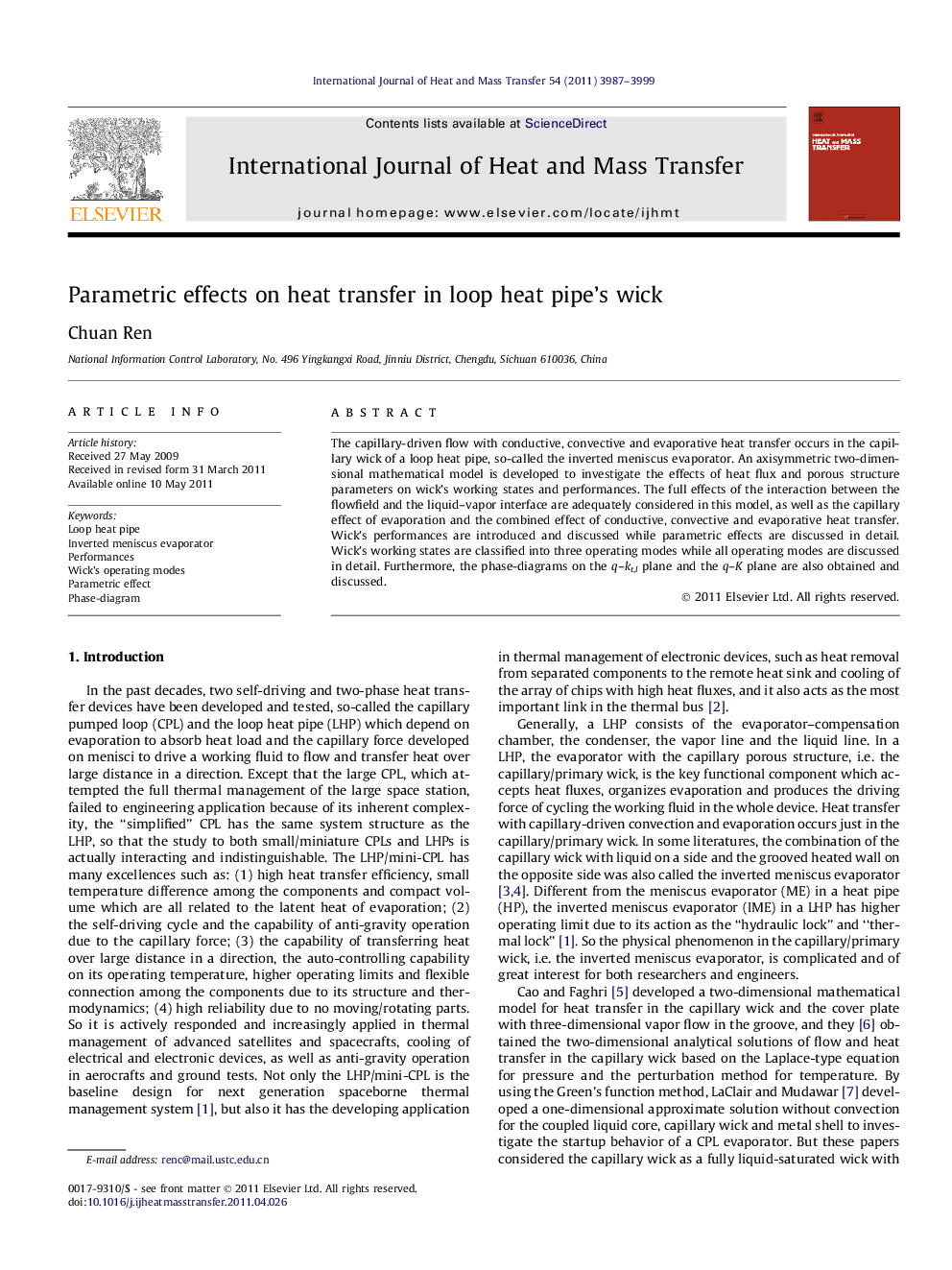| Article ID | Journal | Published Year | Pages | File Type |
|---|---|---|---|---|
| 659694 | International Journal of Heat and Mass Transfer | 2011 | 13 Pages |
The capillary-driven flow with conductive, convective and evaporative heat transfer occurs in the capillary wick of a loop heat pipe, so-called the inverted meniscus evaporator. An axisymmetric two-dimensional mathematical model is developed to investigate the effects of heat flux and porous structure parameters on wick’s working states and performances. The full effects of the interaction between the flowfield and the liquid–vapor interface are adequately considered in this model, as well as the capillary effect of evaporation and the combined effect of conductive, convective and evaporative heat transfer. Wick’s performances are introduced and discussed while parametric effects are discussed in detail. Wick’s working states are classified into three operating modes while all operating modes are discussed in detail. Furthermore, the phase-diagrams on the q–kt,l plane and the q–K plane are also obtained and discussed.
